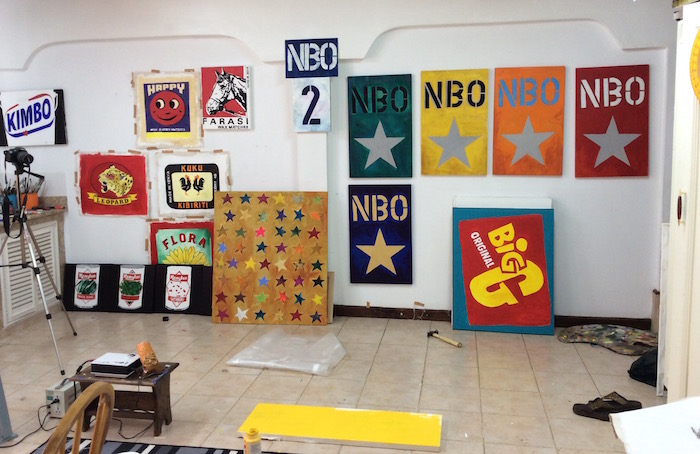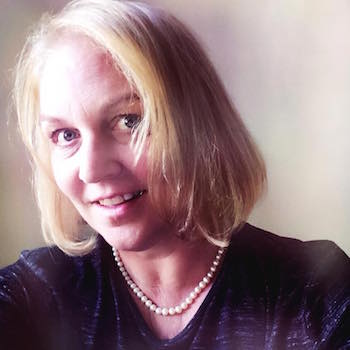If you’ve been paying attention to what we’ve been doing at Art Biz Coach the last couple of years, you might have picked up on a “big table” theme. Not round table. BIG table. We don’t care what shape it is.
We have Big Table Art Talks, where I show up – free of charge – and talk with your group about whatever is on your minds.
And we have Big Table Art Retreats in various parts of the country.
The Big Table is a metaphor for my life vision, which goes something like this: I want to spend my nights sitting at a big table with artists and deep thinkers. We’ll talk about art and big ideas all night while eating excellent food and drinking copious amounts of wine.
Sounds pretty awesome, right?
So, let’s pretend we’re at the big table. You, Elaine, and me. This is a juicy topic, so don’t forget the wine! (Really good coffee is okay, too.)

The Negative Review
Everyone says that there’s no such thing as a negative review. That any media attention is good media attention.
That’s easy to say until someone slams your work.
In this episode of the Art Biz Podcast, I’m at the big table with Elaine Kehew, who shares the story of a negative review she received last year and the resulting journey to improve the quality of her art.
The critic who rankled her was someone she knew and trusted, so she took his comments to heart. And they hurt.
This isn’t a story about perfectionism. Perfectionism is crippling, Elaine says. It’s not about aesthetics or beauty. It’s about Elaine’s quest to quantify the quality of her work – to ensure that it is getting better.
Elaine is a repeat student of the Art Biz Accelerator, a class in which my students set goals. When I read that Elaine’s #1 goal for the year is to improve the quality of her painting, I asked her how she would measure that. After all, goals are supposed to be measurable so you know when you achieve them.
This led Elaine to explore quality – particularly the research being done around quality management in the 1990s and early 2000s. (In her previous life, Elaine was a researcher for a law firm.)
Listen as Elaine opens up about what happened after her negative review and shares 8 targets she has identified to improve the quality of her paintings.
Music: Keep It Simple by Wildermiss. Used with permission.
Listen to or subscribe on iTunes.
Elaine’s 8 Targets for Improving the Quality of Her Paintings
Text in italics are Elaine’s notes to herself.
1. Prioritize quality.
Make quality my number one priority all the time … and then think about how I will handle the first conflict between my stated objective and a pressing deadline or an attractive shortcut.
2. Identify quality issues.
This is an internal process that involves a, gasp, spreadsheet.
Why were approx 20 of my paintings last year not really successful? Was it execution, paint selection, time and effort or too much of an experiment from my style to be really professional works? Were the materials used sub-par? Was the original concept for the painting too weak to actually carry through a painting?

3. Gauge response and satisfaction.
This is the external flipside of #2.
If I am getting a 10 out of 10 every time, great! But what about when my reviewer, friend, or customer, or self, is only a bit satisfied, or I get a negative review, or a completed commission is refused?
4. Acquire skills.
Increase skill level through training or education.
Is there a course I could take or a technique that needs more research? Are some applications simply not ready for prime time until I master them? Find out and do it!
5. Set up a Quality Circle.
Elaine’s Quality Circle consists of having a few trusted friends critique her work before it leaves the studio.
6. Dig deeper.
Evaluate every painting in the series on its own merits, and making sure I am communicating exactly what I want, and then making sure that the execution is closer to flawless.
- Does it represent me as an artist?
- Is the execution well done, or can I do it better?
- Are there any wince-worthy passages?
- Is this a portfolio piece?
- Are the materials top quality ?
- Is the concept my own, or appropriated in an original way?

7. Document my processes.
As a mid-career artist, to improve quality, I have to get more consistent with my output and my processes. This can best be accomplished through detailed documentation – using journaling and a sketchbook.
I can write down my color palette (instead of picking paints willy-nilly or at random), I can narrow down my canvas size selection, and I can be very deliberate when starting an unusual project (such as an installation or sculptural piece).
8. Analyze what works.
After a show, take time to review and narrow my efforts toward what’s really working. What sells, what gets the best feedback, what juices me up (this will always be important), and what draws people in?
For a few years I have been worried about presenting a consistent look as an artist. At the end of each year I cut and paste what I painted into a pdf, and I make a similar collage for sold work. It’s very revealing.
I sold three “star” paintings in 2017 and didn’t realize it until I made the collage. So those are working, but the large pieces with characters didn’t sell. Do they need more work?
About My Guest
 Elaine Kehew is an American artist living and working in Nairobi, Kenya.
Elaine Kehew is an American artist living and working in Nairobi, Kenya.
She’s now on a mission to improve and ensure the quality of her art.



23 thoughts on “The Art Biz ep. 14: Quantifying Quality in Art: Elaine Kehew”
Fantastic! I would like to listen again and take notes. Quality is so important and I’ve started a spreadsheet to analyze what is working. I do not create a lot of work due to perhaps some crippling perfectionism but honestly, it has more to do with quality, in my eyes at least. This was affirming, thanks, Alyson!
I’m so happy you listened and enjoyed it, Margaret. Would love to see your spreadsheet when you’re ready to share.
Thank you Margaret, it is a balance between quality and quantity, that’s for sure!
This was fabulous. Thanks so much for sharing all of these ideas. I already keep a notebook of pigments, etc for each piece and can attest to how much that helps me keep improving. My current critique group is currently full of hobbyists who are reluctant to offer or hear real critique so I use a mentor for serious critique and she is not afraid of telling me what she thinks. It is very helpful. Today I will start my own spreadsheet of your other ideas to help me keep track of them and apply them to my new work. Thanks so much.
Robin: You are so diligent in all that you do. I’m happy to hear you found someone to give you feedback. Would love to see your spreadsheet when you’re ready to share.
Robin, it sounds like you’re well on the road, with diligent journaling. Wonderful!
I love how honest and concise Elaine is in her execution of critiquing her work. Her 8 steps to improving quality are not only helpful but inspiring. I will definitely create my own spreadsheet for my reviews. Thanks!
Thanks for listening, Melissa. Let us know how it goes.
Thanks Melissa! Glad you found inspiration in this, it is a quest! Hope the spreadsheet can be an effective tool. Best, Elaine
This is a wonderful pod-cast. Elaine Kehew is a pleasure to listen to. Smart. Articulate. Well thought through.
She sure is one of my favorite people. It’s been such a joy watching her growth as an artist.
Thanks Suzanne, a negative review gives one a lot to think about. I am looking forward to seeing what this year brings!
Elaine hit the nail on the head when she mentioned rushing for a show. Rushing affects everything about the art from idea incubation through execution. I have experienced a few dead end styles created during a rush for a show. Even though I had 4 months to create it was not sufficient to resolve media and style discrepancies. It wasn’t until a full year later that the aha moment came.
You never really know until it happens to you. Right, Helena?
You know Helena, I have painted in a frenzy in the past with super results, but this time it was the worst thing to do. Rushing the process doesn’t work for my creative process….glad if you can identify….
What an articulate artist Elaine is. This podcast was full of practical details and so inspiring about what to do with a negative critique.
Yes, she is, Donna!
Thank you Donna, glad if any of the ideas resonated with you!
Its kind of hard to hurry a sculpture, but I’ve managed to do it a few times. I have become very critical of my work before hauling them off to the foundry. I live with the clays for a while and check them on different days, in different light conditions. I look at the finish very carefully, and make a point of going over the work with a magnifying glass and a mirror. It’s amazing how I can find things to improve on. Then I have other folks look them over, to get their reactions and opinions. I especially make a point of having various women, including my wife and mother-in-law when working on female subjects. Its amazing what I have learned about what women’s hair DOES NOT do.
THEN, I commit the original to the mold-maker and foundry. For me, nothing validates like someone forking over money for something I painstakingly labored over. A very interesting conversation with Elaine.
That validation that comes with a sale is so true for most artists, John.
Alyson helped me to be fearless in putting my work out there, and helped me with my first year of sales. What an affirming thing, still, to sell….
xoxo
Elaine, you put me to shame. I am a Quality Assurance Engineer by profession and I NEVER thought of applying QA principles to my art. What a marvelous idea! I intend to learn from you and spruce up my art quality processes as well. Thank you very much for sharing your new methods with us. I wish you all the very best in your art career! Alyson, thank you for another generous and meaningful lesson. It is very much appreciated!